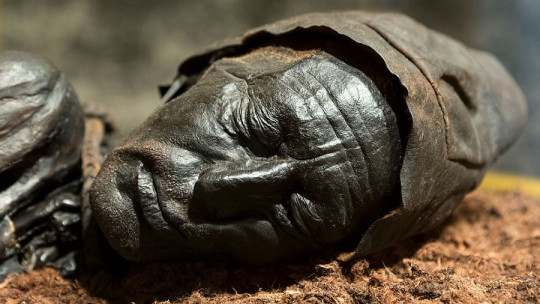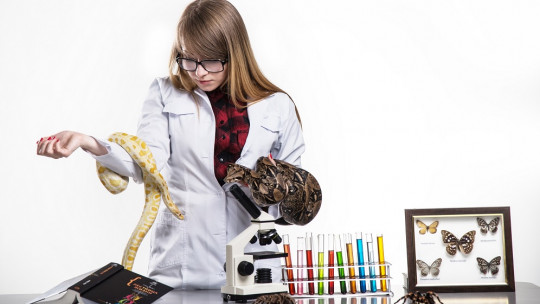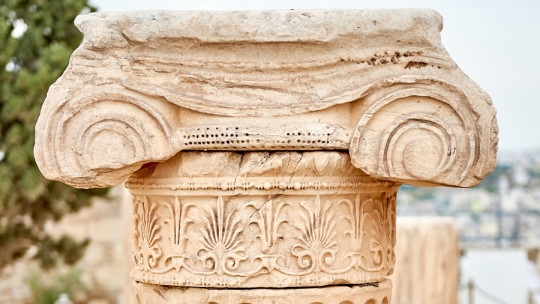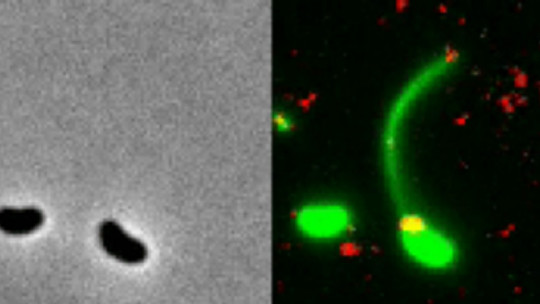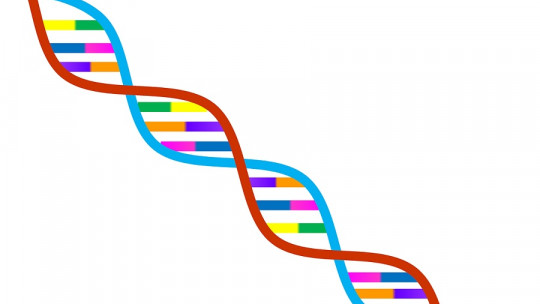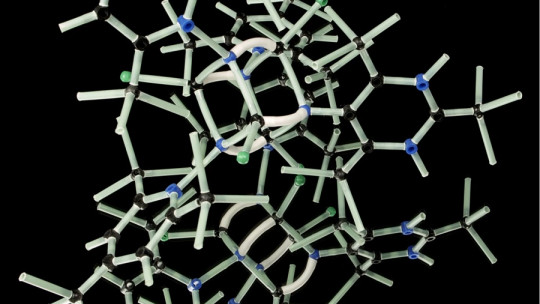The discovery of the DNA chain was revolutionary, possibly one of the greatest scientific discoveries of recent decades. The study of this protein has allowed us to access the very core of life, since DNA is nothing other than the place where the genetic information of living beings is stored.
Aside from the transcendental consequences that this discovery has had for medicine, it is also important to note that, through DNA, it has been possible to access greater information about our past, since genetics has allowed us to decipher some of the most inaccessible mysteries in history. The science that studies the human past through genetics is archaeogenetics which we will talk about below.
What is archaeogenetics?
Archaeogenetics is the discipline that studies the human past through the application of genetic techniques This method is especially useful for drawing the movement of human groups throughout history, and how they have mixed and coexisted.
The term was used for the first time by Colin Renfrew, an English archaeologist who, in 1990, published an interesting work titled Archeology and Language: The Puzzle of Indo-European Origins (“Archaeology and language: the puzzle of Indo-European origins”). In it, Renfrew established the Indo-European origin in Anatolia and defended its subsequent expansion throughout Europe and part of Asia throughout the Neolithic. With this hypothesis, the archaeologist opposed the theory established by Dr. Marija Gimbutas and placed the birth of the Indo-Europeans 2000 years earlier than she supposed.
Through archaeogenetics Migration studies of the human population have been perfected over the millennia , since through the DNA of these peoples their movement patterns have been established. Thus, for example, in 2016, thanks to the improvement of the extraction of genetic information from bone remains, a team of researchers discovered that the first settlers on the islands of Oceania did not come, as was believed until then, from Melanesia, but from China and Taiwan. And all, thanks to the discovery of blood groups.
To understand the roots of archaeogenetics we must go back to the beginning of the 20th century. It was then that the Polish scientist Ludwik Hirszfeld (1884-1954) carried out experiments that proved the existence of human blood groups, as well as their inheritance through genetics. Thanks to these studies, Hirszfeld discovered that there was a considerable decrease in blood group A from Europe to India, and that the opposite happened with group B. These discoveries motivated the Polish microbiologist to continue investigating the links that existed between blood groups. and diseases, as well as their dependence on the sex and age of the individuals and the climate of the place.
The hematologist Arthur Mourant (1904-1994) followed in Hirszfeld’s footsteps. His work with blood groups definitively laid the foundations for future archaeogenetics, since he established a world genetic map through the study of the various existing blood groups A little later, in the middle of the 20th century, science was ready to take advantage of the possibilities offered by the discovery of DNA in the field of archaeology.
DNA and its role in archaeogenetics
“DNA” is the acronym for deoxyribonucleic acid, a molecule found in the nucleus of the cells of living beings and which contains all their genetic coding. Currently, DNA extraction methods have been perfected, although the risk of sample contamination during the process still exists. This risk increases if the extracted material is not fresh; That is, if the DNA has been obtained from bone or fossil remains, and not from living individuals.

DNA offers very valuable information about the living being from which the sample has been extracted. That is why this method has become a crucial element for study not only population movements, but also the quality of life of the subject in question Thus, from a DNA sample, we can deduce what the deceased person’s diet was like and whether they suffered any type of congenital disease. The information is also very valuable when determining the relationship between people, as we will see later in two of the cases in which DNA definitively closed long historical debates.
But how is DNA extracted? Let’s see it below.
The delicate extraction process
As we have already indicated, the DNA sample can be extracted from both living individuals and skeletal or fossil remains. In the first case, a sample of saliva, blood, skin, hair, etc. will suffice. of the person; There we will have a sufficient amount of DNA to extract precise information.
The great advantage of samples from living people is that the DNA is not damaged or in the process of degradation. When the source is dead or fossilized tissue, we run the risk that the material has been almost completely destroyed Various factors intervene in this process: from natural postmortem decomposition, where bacteria and fungi destroy the DNA chain, to the climate where the remains have been preserved. The warmer this climate, the more chances there are for the DNA in the sample to become unusable.
But even if the sample has been preserved in a favorable way, it is very important that, during the extraction process, we follow all the guidelines, in order to avoid possible contamination Thus, the steps would be the following:
This process is the so-called traditional DNA obtaining system. There is a more precise system, the commercial one, which reduces the risk of contamination and also reduces the steps to follow. In any case, it is important to keep in mind that there will always be a risk, no matter how small, that the process does not go as it should. In this case, the sample will be useless and a new one will have to be extracted.
Examples in which archaeogenetics has given the definitive answer
The successes of archaeogenetics have been numerous. If the DNA extraction and decoding process is followed correctly and there is no significant contamination, the results are almost 100% reliable, which is why this is a method widely used today to unravel certain mysteries of the past that, otherwise, would remain without resolving. Below, we bring you some examples where archaeogenetics has been key to solving historical enigmas.
The fate of the last Russian imperial family
In 1979, skeletal remains that had been buried near a mine appeared in Siberia The scientists immediately understood that it was very possible that those remains belonged to the family of the last Tsar of Russia, murdered in July 1918. However, they did not make the discovery public, as they feared the reaction of the government of the then Soviet Union.
A few years later, and after the fall of the USSR, work in the area was resumed. The corpses of the entire imperial family and some of their servants appeared… but two people were missing. One of the younger daughters, Maria or Anastasia, and Alexei, the tsarevich, were not there. Immediately, the rumors spread: Was it true, then, that Anastasia had survived the massacre? Was it possible that the heir had also survived?
In 2007, the remains of two more bodies were found in a nearby well. Thanks to archaeogenetics, the mystery was settled. Because, indeed, those two new corpses belonged without a doubt to the Romanov family. The husband of the then Queen of England, the Duke of Edinburgh, offered to participate in the genetic tests, since he was related to the Russian imperial family: he was the grandnephew of Tsarina Alexandra. The matches in the DNA samples left no room for doubt. Genetics had put an end to all the legends at once.
The heart of the little Dolphin
Another real drama, also derived from a revolution, was the one experienced Luis Carlos de Borbón, better known as Louis XVII Son of the ill-fated kings of France Louis XVI and Marie Antoinette, the little boy ended his days in the Temple prison, where he was constantly mistreated by his captors. There he died, in complete solitude, at the age of 10.
From then on, the heart of the little Dolphin began a bitter and tedious odyssey. His body was buried in the Sainte-Marguerite cemetery in Paris, but his heart was placed in a jar by the doctor who performed the autopsy. After touring several houses and “belonging” to countless owners, the prince’s organ finally ended up in the Basilica of Saint-Denis, where his parents also rest.
How was it proven that the traveling heart actually belonged to Louis XVII? Again, through archaeogenetics. DNA samples were obtained from Marie Antoinette’s preserved hair which made it possible to demonstrate that the owner of the heart was, indeed, his son Luis.
Ötzi, the ice man
In September 1991, mountaineers found a mummy in the Ötzal Alps. The excellent state of conservation of the remains, which suffered natural mummification, was due to the extreme cold in which they were preserved. Ötzi, as the mummified man was called (in honor of the region where he was found), was the oldest and best preserved corpse, dating back to no less than the 4th millennium BC.
The improvement of DNA decoding techniques allowed, among other things, to know what Ötzi was physically like It was discovered that she had dark eyes and brown hair, plus she was lactose intolerant. The intact blood cells from the corpse, similar to a current sample, made them, once again, the oldest blood remains that have been found, and allowed us to determine that the man was of blood group 0+. Again, archaeogenetics helped place Ötzi in the panorama of human migrations: he belonged, in all likelihood, to southern European groups. What, then, was a southern hunter-gatherer doing in the mountains of the Italian Alps? Here other disciplines come into play, such as history or anthropology. But the basis for any conclusion reached will have been laid, again, by archaeogenetics.

